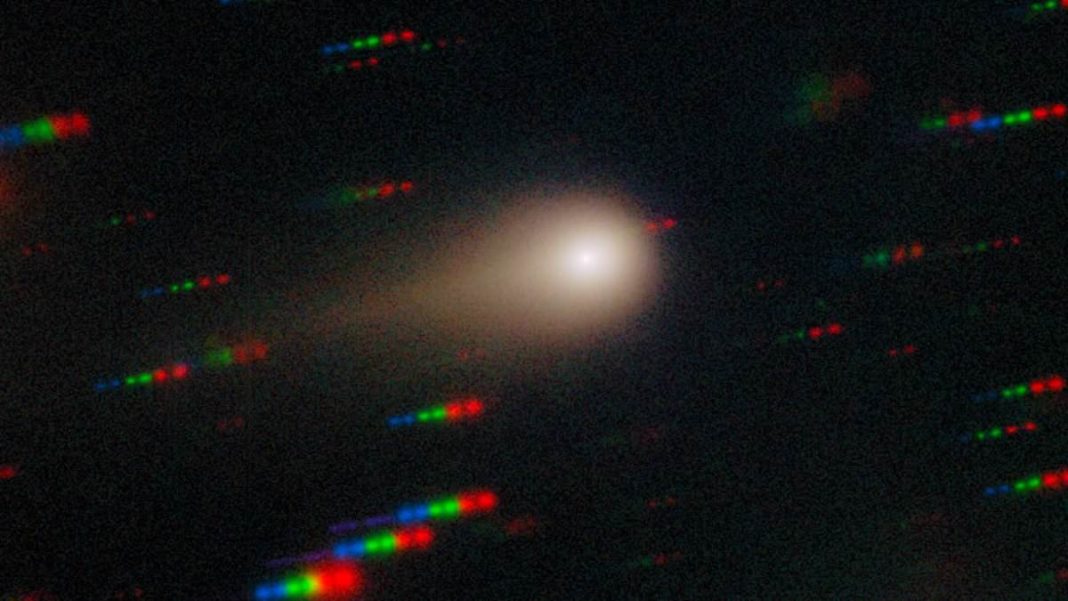Interstellar Visitor 3I/ATLAS Shows Baffling Behavior Near Sun
The mysterious interstellar object 3I/ATLAS has stunned scientists by appearing to reverse thrust as it passed behind our sun, adding to growing evidence that challenges conventional explanations about its origin.
Key Takeaways
- Object showed apparent reverse thrust during solar passage
- Eight distinct anomalies detected by researchers
- Odds of natural occurrence: 1 in 10 quadrillion
- Closest Earth approach expected December 19
Harvard physicist Avi Loeb leads scientists suggesting 3I/ATLAS displays signs of intelligent guidance. The object’s next critical test comes on October 29 when it reaches its closest point to the sun.
‘If 3I/ATLAS comes out of this blind spot in a completely different place than gravity was taking it, it would be a clear sign the object was artificial,’ Loeb told the Daily Mail.
Scientific Divide
Most astronomers maintain 3I/ATLAS is a natural comet, pointing to its tail and coma. Previous studies attributed its strange carbon dioxide-rich makeup to formation in a foreign solar system.
However, Loeb contends the scientific establishment prioritizes reputation over investigating extraordinary possibilities.
‘Here we are talking about a potential for something that could affect humanity in the future in a dramatic way,’ Loeb explained. ‘You shouldn’t apply the same approach of being as conservative as possible.’
Unprecedented Chemical Signature
August studies revealed 3I/ATLAS emits nickel without detectable iron—unlike any known comet. Chilean astrophysicists documented the object shedding nickel at 5 grams/second and cyanide at 20 grams/second, with both rates increasing near the sun.
The object releases 940 trillion CO2 molecules per second, suggesting formation in a star system completely different from ours.
Size Revelation and Martian Observations
Initial 12-mile diameter estimates were revised to just 1.7 miles after NASA telescope analysis. Over 99% of observed light comes from its massive coma.
NASA’s Perseverance rover captured images suggesting a cylindrical shape, though Loeb attributes this to camera stacking artifacts during 10-minute exposures.
The object currently sits 298 million miles from Earth and shows water ice coverage alongside massive CO2 emissions.
Scientific Consensus vs. Anomalies
Multiple studies involving dozens of researchers conclude 3I/ATLAS is a unique natural comet.
‘It is clearly a natural comet; suggestions to the contrary are laughed at by people who are actual comet experts,’ said Jonathan McDowell of Harvard-Smithsonian Center for Astrophysics.
UCLA’s David Jewitt and international teams attribute the object’s unusual appearance to Earth’s perspective rather than strange behavior.
Historical Context and Scale
First spotted July 1, 3I/ATLAS is only the third recorded interstellar visitor after Oumuamua (2017) and comet Borisov (2019). Loeb calculates it measures at least 3.1 miles long and weighs 33 billion tons.
‘It’s bigger than the asteroid that killed a dinosaur 66 million years ago,’ Loeb revealed. ‘Such objects are extremely rare.’
The object’s massive size challenges natural formation theories, as interstellar space lacks sufficient rocky material for such structures.
Global Response and Future Observations
Despite no collision threat, NASA added 3I/ATLAS to its planetary defense threat list, mobilizing 227 observatories worldwide.
The object will make closest approach to Earth on December 19. NASA plans detailed readings during its Jupiter approach on March 16, 2026.
‘We should not miss an opportunity, because this is a gift from interstellar space,’ Loeb concluded. ‘What nature is trying to tell us is that we don’t understand something.’









